Enlarge
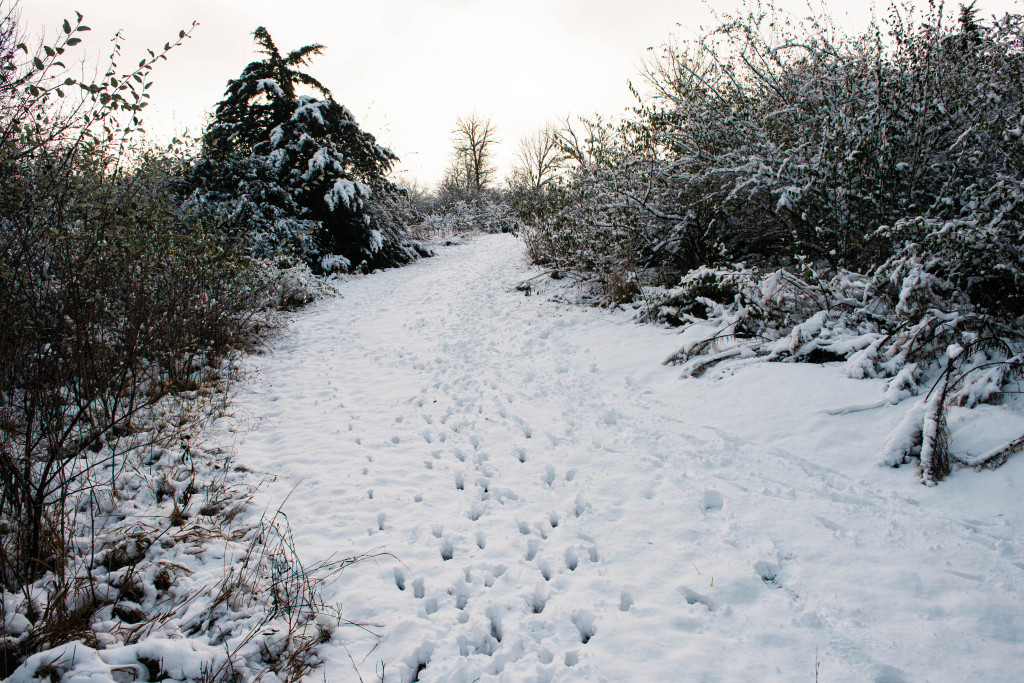
Deer tracks cover a trail through a snow-covered landscape in Area 14 at Branched Oak Lake WMA near Malcolm in Lancaster County. Photo by Eric Fowler.
By Monica Macoubrie, Wildlife Education Specialist
Winter is normally a time for hibernation. Sleeping five to sometimes nine months out of the year, animals will lay coiled up and cozy in an underground burrow, a pile of leaves or, as humans do, under a heated blanket in our beds. The negative temperatures, face-stinging wind, and feet and feet of shoveled snow could make anyone want to hibernate all season long in their heated homes. However, winter is a fabulous time to get outside and experience nature. Although animals are generally less active in the winter, you can still find signs of life, and one fun way to look for animal presence is to search for their tracks. You can learn a lot of information about an animal by looking at its footprints. Here are a few tips to help you improve your sleuthing skills.
Look for Patterns
Looking at patterns in animal tracks can help you identify not only the animal that made the track, but also what that animal was doing at the time. For instance, is the animal a stepper — like a deer, fox or coyote? Or, was the animal bounding, like a mink or a weasel? Some animals are hoppers, like squirrels and rabbits. Or, they may be a loper, like a skunk. To find out, you can use pattern classification by measuring the stride length and straddle between prints. The straddle is the distance between the right and left footprints. This information can help you approximate the size of the animal that made the tracks and give you a sense of the speed at which it was moving.
Focus on Details
Does the track have toenail impressions? Is it large? How many toes does it show? Measure the width and length. Was anything else left by the tracks, such as hair/fur, pieces of food, antler sheds, etc.? In addition to the width and length, you could also measure the depth of the track. This could give you a good estimate on the approximate size and weight of the animal. Details could make all the difference when trying to identify what animals are in your area.
Don’t Forget to Look Up!
Obviously, tracks aren’t going to be in the trees, but there’s more to tracking than the prints on the ground. Knowing your surroundings will better help you understand what the animal was doing when it moved through the landscape. Are you around hardwood trees or conifers? Are you around shrubs or next to a meadow? Can you find any evidence of an animal eating in that area? Was it running or casually walking? Did it leave behind any scat or other droppings?
Common Nebraska Animal Tracks
Below are a few common animal tracks you may run into while hiking. If you’re going out to strictly look for animal tracks, I suggest bringing a few essentials. For instance, start with a good animal tracking guide. There are many resources on the internet or, even small pocket books that you can easily slip into your backpack or back pocket will work. You may also want to bring a ruler to measure: Often, animal tracks are so similar except for one thing — size. For example, mountain lion tracks and bobcat tracks look eerily similar, except for their size comparison. Also, bring a camera. If you can’t identify tracks immediately, you may want to snap a photo to reference later. Most importantly, remember to have fun! Being outside should be enjoyable, and running into some wildlife footprints just makes it extra special.
Raccoon Tracks:
• Five finger-like toes that are around 2-3 inches in diameter.
• Unique walking pattern where front and hind tracks from opposite sides of the body register next to each other.
• Foot pad is shaped like a “c.”
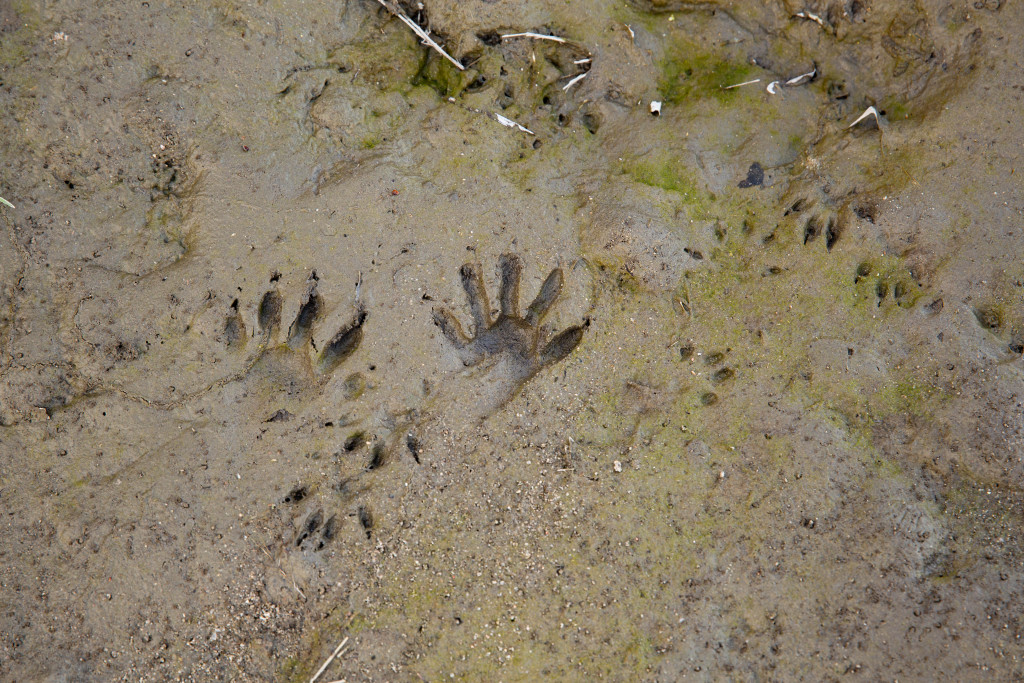
Deer Tracks:
• Two hoofed toes that come to a point at the front of the track (heart-shaped).
• In deep mud or snow, you may see an extra set of vestigial toes at the back of the track known as “dew claws.”
• Often found in coarse debris like leaf litter and mulch due to the heaviness of the animal.

Rabbit Tracks:
• Tracks most commonly seen after a snow.
• Hind feet are at the top and the front feet are at the bottom.
• Each group of four tracks tends to form a tall, thin triangle.
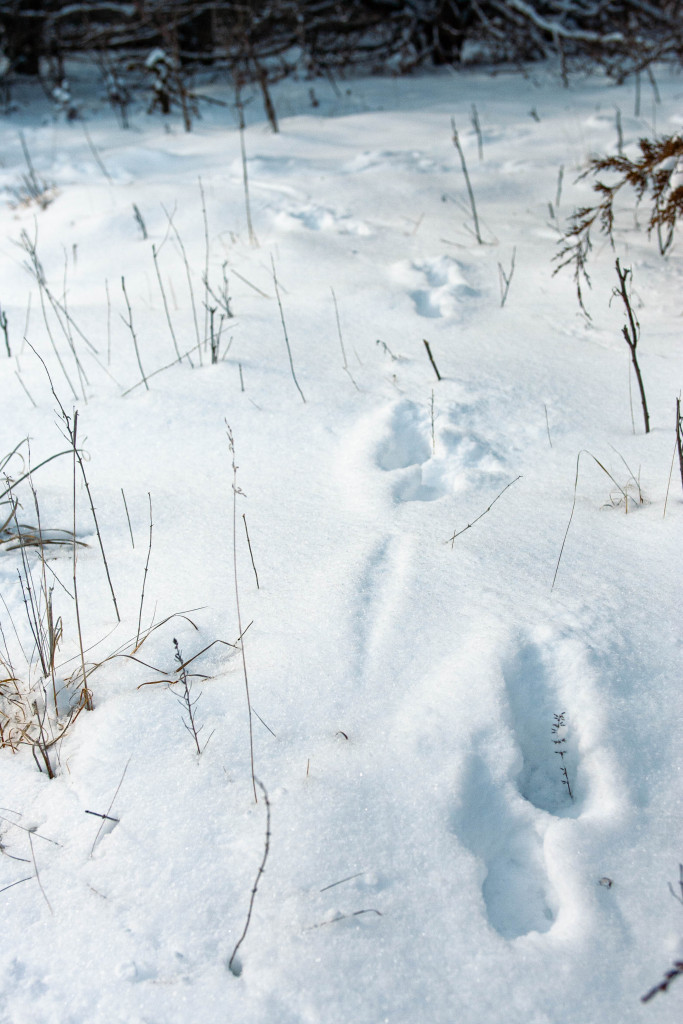
Coyote Tracks:
• Oval-shaped and measure around 2.5 inches long and 2 inches wide.
• Four toes with claws on both front and hind feet.
• Tracks are relatively symmetrical and roughly triangular-shaped.
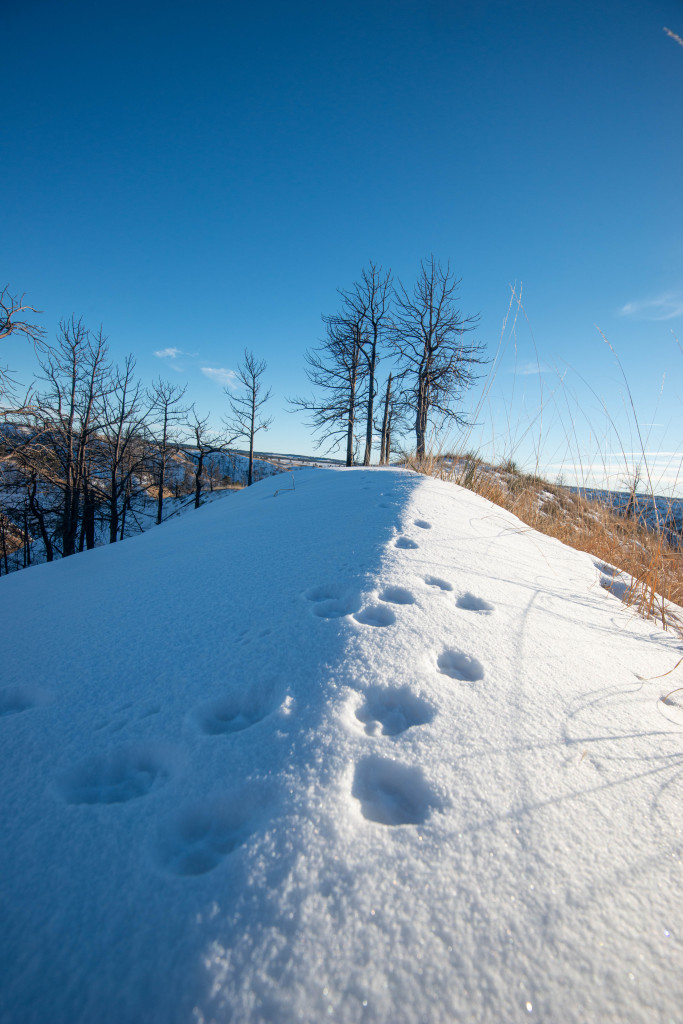
Turkey Tracks:
• Three large toes forward and one small toe in the back.
• Usually very large — around 3.7-5 inches long and 4-5.5 inches wide.
• You often will find many turkey tracks in a single area — they often travel together.
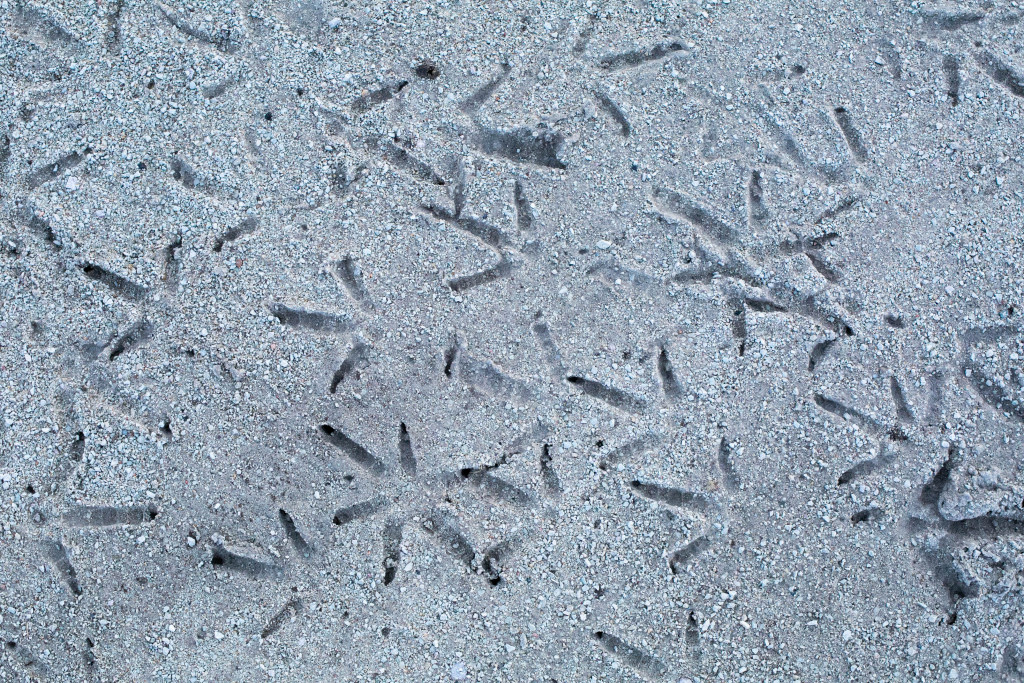
The post Winter Wildlife Tracking appeared first on Nebraskaland Magazine.
















